
Jason Boyce,
13 February 2020

If you have been around the Gauteng birding scene for any length of time you will most certainly have heard of the famous Zaagkuildrift road and Kgomo-Kgomo floodplain. If not, here’s a very brief run-down. The area lies a good sixty kilometers to the north of Pretoria and to the west of Pienaarsrivier town. The road has some excellent bushveld habitat and follows the Pienaars River for twenty-five kilometers before it reaches a small rural town called Kgomo-Kgomo (don’t try and say that 10 times fast). Just to the south of the town is a massive floodplain that in most good rainfall seasons will flood to a greater or lesser extent.
I have added a very basic google earth image below. Pienaarsrivier town lies on the N1 to the east. The Zaagkuildrift road is highlighted in purple and the Kgomo-Kgomo floodplain is outlined (roughly) in green. The Kgomo-Kgomo bridge can be found at: -25.165044, 28.083072
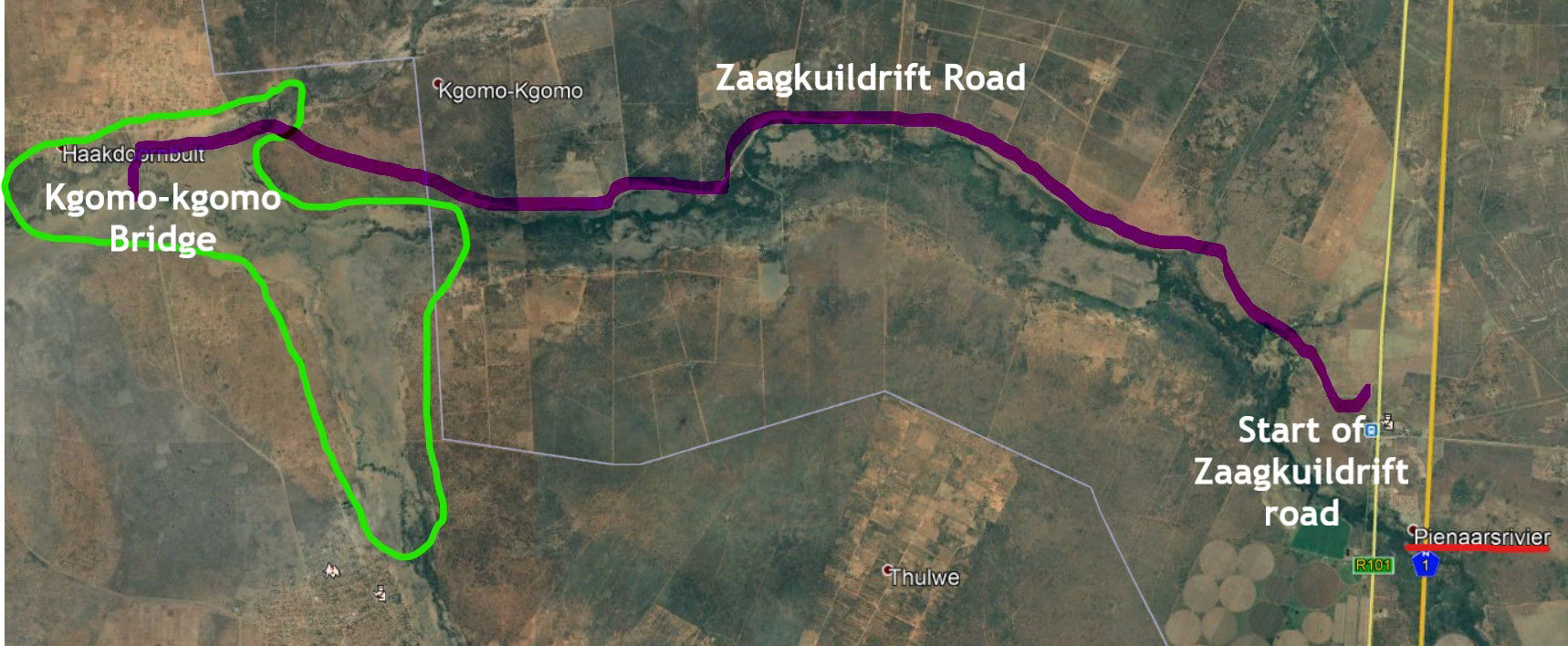
Sven Otto, Tristan Spurway and I decided to head out and see what the conditions were like.
January through April are generally the best months to visit this area as not only is the floodplain alive with activity (most years), the Warblers and other migrants are singing with vigour. The Zaagkuildrift road acquired legendary status a long time ago now when it was discovered that both River Warbler and Thrush Nightingale can be located when they begin to sing with ‘gusto’ late in the season. We are nearing that time of year where many birders will be packing their vehicles with all the necessaries (optics, coffee and patience) and heading up to give these invisible birds a go.
We decided to start our morning at the floodplain so took the lesser-known route through Hamanskraal to get to the Kgomo-Kgomo bridge at sunrise. We were greeted with a Southern Pale Chanting Goshawk and male Shaft-tailed Whydah in all its breeding splendour before stopping on the bridge to this incredible view:
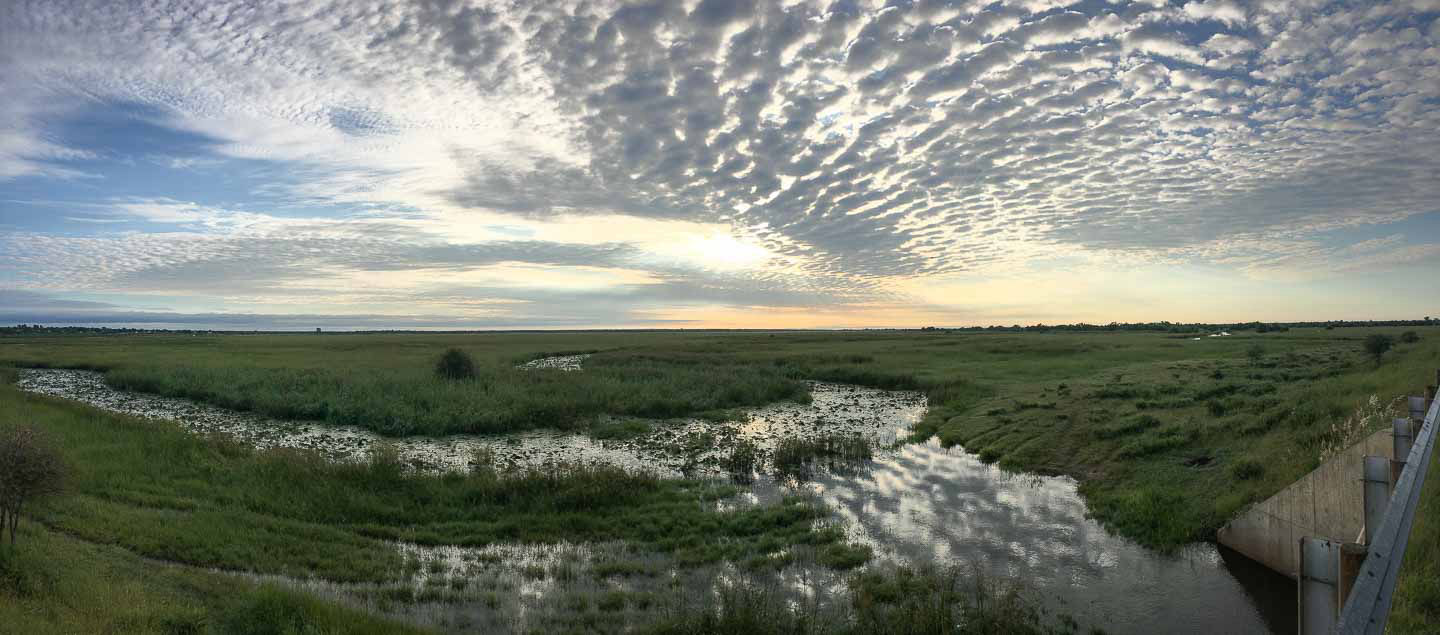
Black-crowned Night-heron, White-faced Whistling Duck, Knob-billed Duck and a couple of Black-winged Pratincole were flying around whilst the calls of African Crake echoed from the flooded grasslands to the east. The few shorebirds present included Wood and Marsh Sandpiper, Kittlitz’s and Three-banded Plovers and a single Little Stint. The dryer parts of the village produced a pair of Great Spotted Cuckoos, Great Sparrow, Kalahari Scrub-robin and Red-billed Oxpecker. We thoroughly enjoyed the “Little Bearded Men” flitting around from fence to fence and often feeding on the ground! The warblers were fairly quiet and we only recorded Willow Warbler, a couple of Icterine Warblers as well as Common Whitethroat. Red-backed Shrikes were in good numbers and beware, they try their best to call like a warbler!

Scaly-feather Weaver
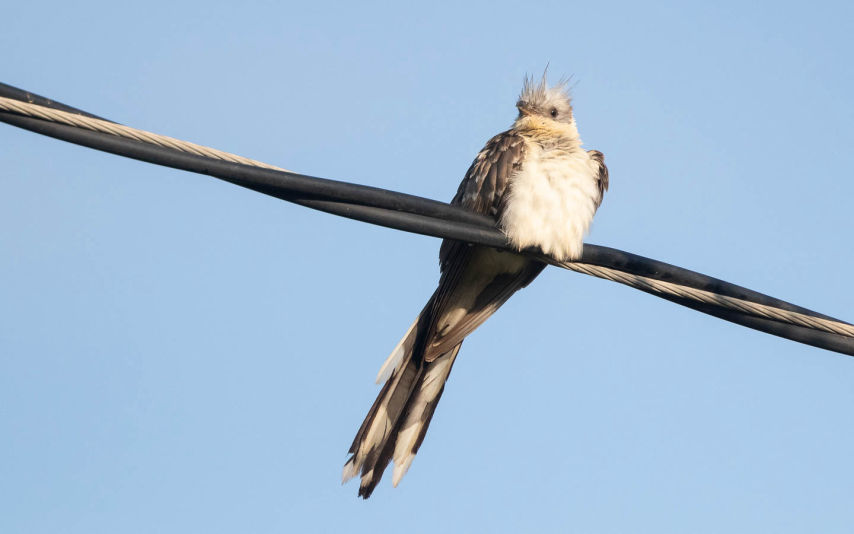
Great Spotted Cuckoo
Naturally we were doing some atlasing and pentad 2505_2810 closed in at 107 species in just over 2 hours! This pentad now has a seriously impressive 341 species recorded on Full Protocol Atlas cards. The pentads data can be viewed here. We also completed pentad 2505_2800. Both pentads produced some great birds.
Tristan and Sven enjoying some coffee and of course, some life-saving-birding-rusks (these rusks are becoming famous)!
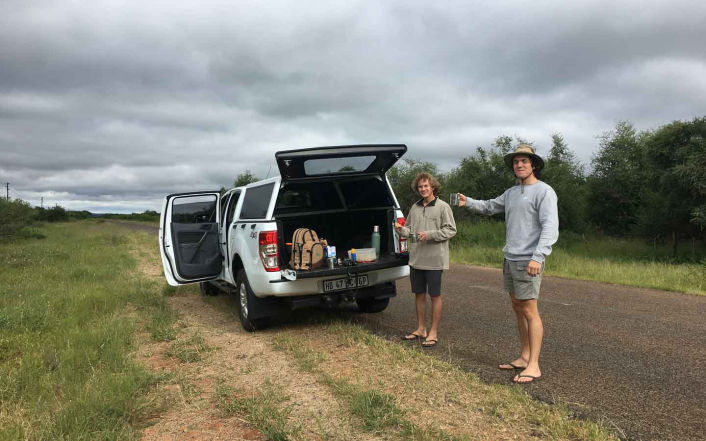
Soon though our birding came to a halt, not only due to the reduced bird activity but more accurately due to the fact that the butterflies were finally waking up! We spent time on crake road watching, photographing and identifying the different butterflies that came down to large puddles in the road. The butterflies were “mud-puddling”! Mud-puddling is a behaviour in animals, most often seen in butterflies, where they seek out salts and minerals in wet soil. They suck up the fluid, to obtain various nutrients and are often seen gathered in large numbers together in one spot. It seems to me that it is most frequently done by the Whites (Pieridae) and Swallowtails (Papilionidae) but we also saw some Skippers (Hespiridae) and Blues (Lycaenidae) participating.

Tristan and I looking on as the butterflies came down to "mud-puddle"
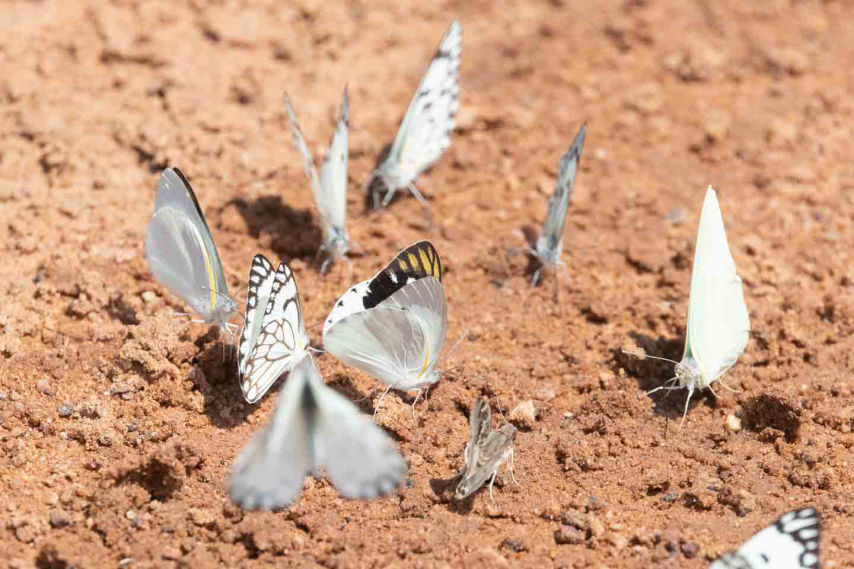
A group of Peirids and a single Skipper coming down to the damp soil.
Below are images of the various species of butterflies that we managed to record on the day. I got one new butterfly today, namely Ragged Skipper (Caprona pillaana).
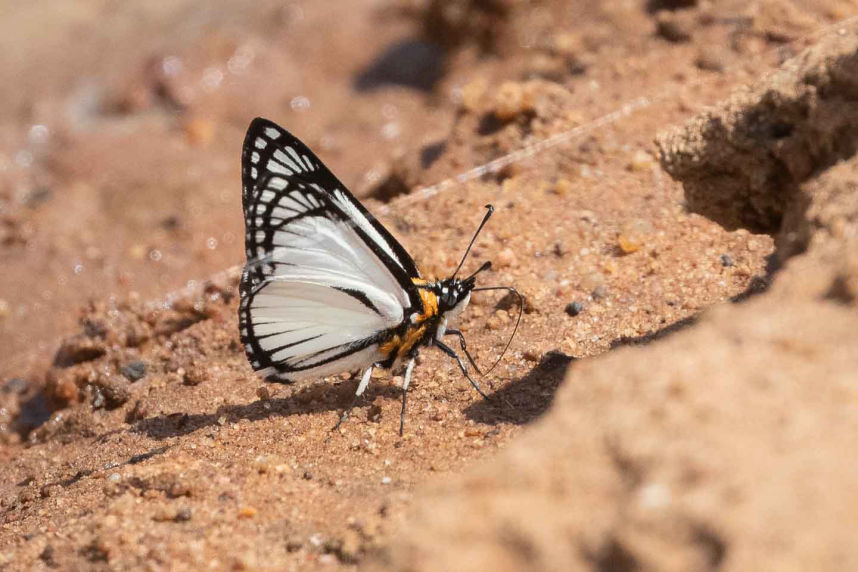
White-cloaked Skipper (Leucochitonea levubu)
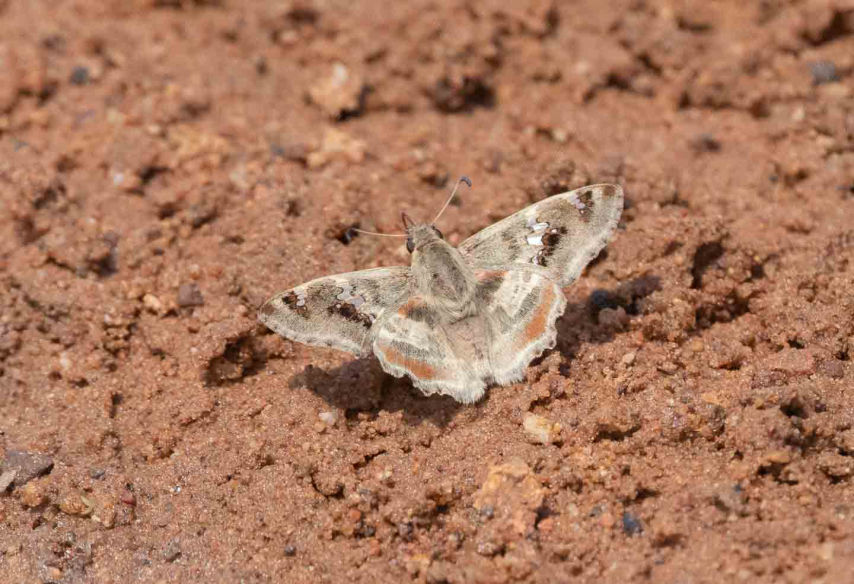
Ragged Skipper (Caprona pillaana)

Smoky Orange Tip (Colotis euippe)
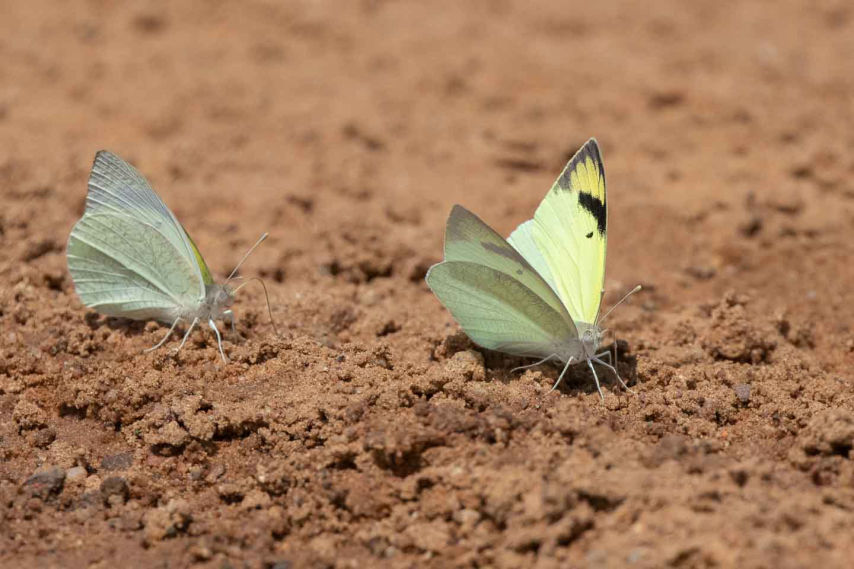
Lemon Traveller (Colotis subfasciatus)

Common Diadem (Hypolimnas misippus)
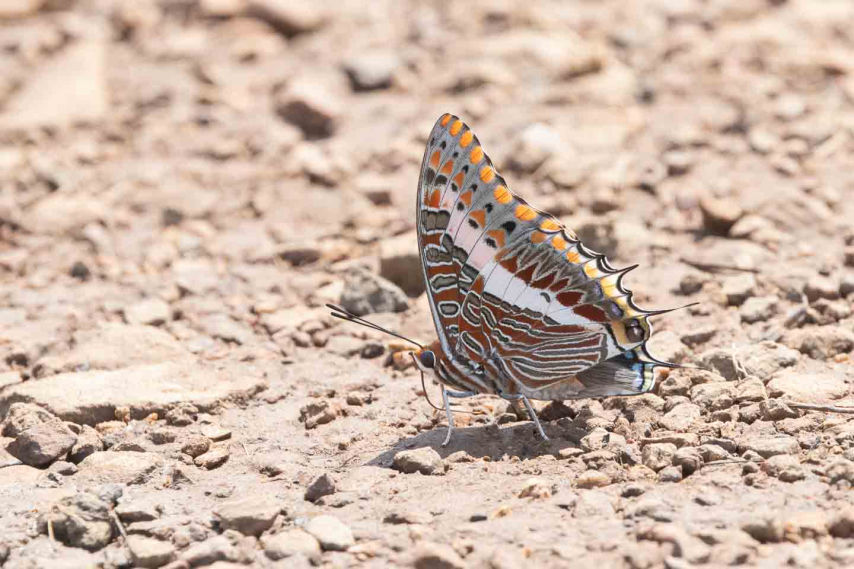
Foxy Charaxes (Charaxes jasius)
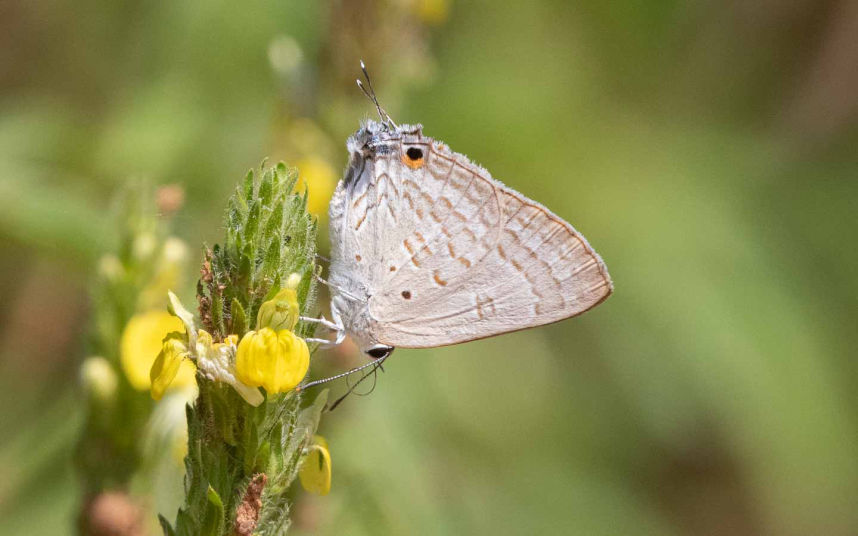
Brown Playboy (Deudorix antalus)
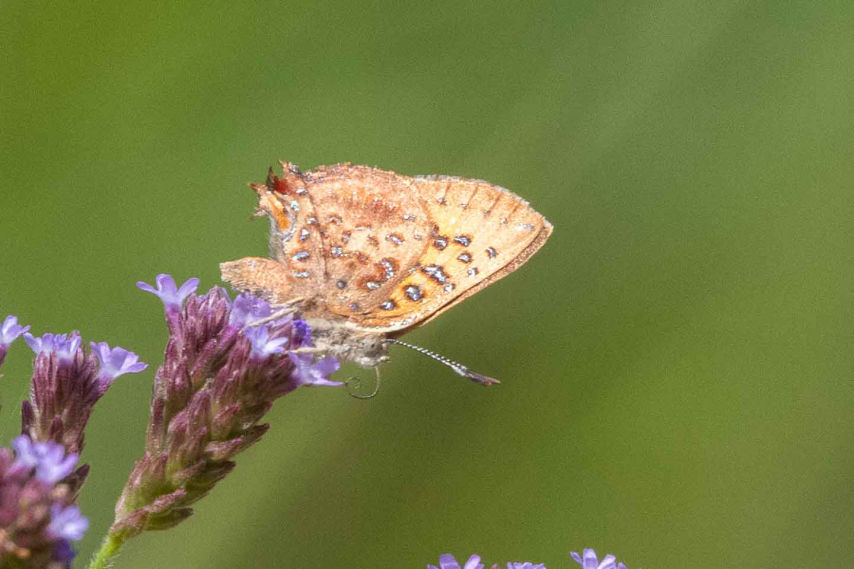
Common Scarlet (Axiocerses tjoane)
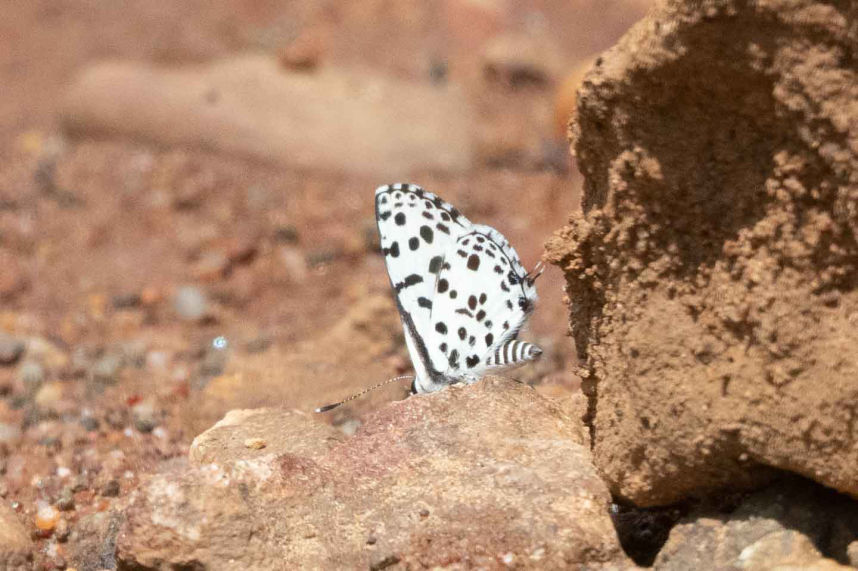
Hintza Blue (Zintha hintza)
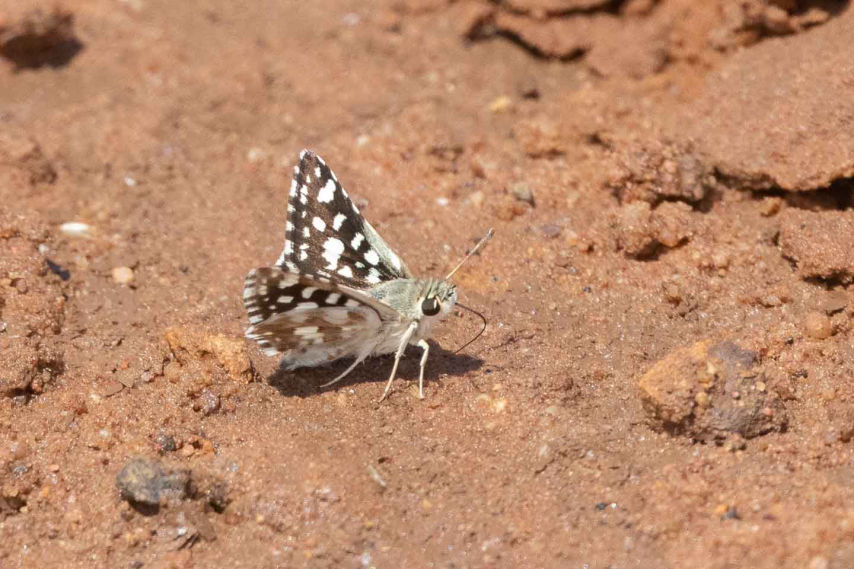
Mountain Sandman (Spialia spio)
Species lists can be viewed here:
Bird species list for the day. This species list is exported from Birdlasser.
Butterfly Species list for the day.
Thanks for taking time to read this story. As I like to say, "there are always more birds (and butterflies)!"
Jason Boyce
© All Photographs Copyright 2020 Jason Boyce
Made with
No Code Website Builder